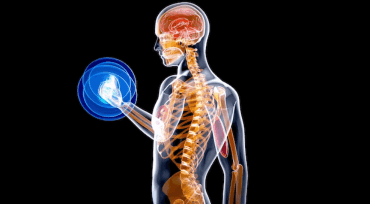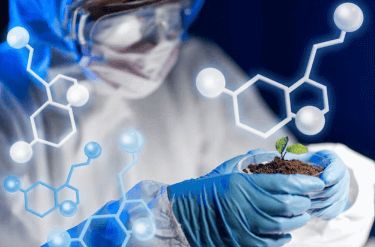Question
a.
Formation of a closed initiation complex
b.
Formation of open initiation complex
c.
Formation of absorptive transcript
d.
Promoter clearance
Posted under Cytogenetics
Interact with the Community - Share Your Thoughts
Uncertain About the Answer? Seek Clarification Here.
Understand the Explanation? Include it Here.
Q. Which of these is the 1st event to take place during transcription initiation?
Similar Questions
Explore Relevant Multiple Choice Questions (MCQs)
Q. The catalytic unit of RNA polymerases when placed properly during initiation is just over _________
View solution
Q. In an experiment you mutate the C terminal domain of alpha subunit of the RNA polymerase. What will you expect to see?
View solution
Q. Mutations as far as 100 base pairs upstream to +1 site will also affect the transcription rate.
View solution
Q. In an experiment you add increasing amount of sigma factor to a mixture of DNA fragment and core polymerase in vitro. You also add [¹⁴C]ATP and [γ⁻³²P]ATP in the mixture and check the rate of incorporation. Results show that the incorporation of both of this labels increase on adding more sigma factor. What will you conclude from your observation?
View solution
Q. In an experiment, you wanted to see which mutation will have worse effect on transcription. In the 1st set you deleted 94 amino acids from the C-terminus and in the 2nd set you replace the 265th C-terminal arginine to cystine. Which in your opinion will have the worst effect?
View solution
Q. Which cation is placed in the catalytic subunit of RNA polymerase?
View solution
Q. While studying the transcripts in vitro you observe that other than the longer transcripts there are some short stretches of RNA oligomer produced as well. You repeat the experiment several times but these oligomers seem to persist. What is the possible explanation?
View solution
Q. Capping of RNA is necessary as_______
View solution
Q. What is the 1st nucleotide of a completely synthesized transcript?
View solution
Q. Processivity of RNA polymerase is ________
View solution
Q. Which antibiotic inhibits transcription elongation?
View solution
Q. You design a reconstructive RNA polymerase where you take the beta and alpha subunit from a rifampicin resistant strain and beta prime and sigma subunit from rifampicin sensitive strain. You check the rate of transcription by this RNA polymerase after the addition of the antibiotic. What will be your observation?
View solution
Q. You add labeled Uridine analogue to the mixture of DNA and RNA pol in vitro. What are you trying to determine?
View solution
Q. Which of these is not a part of RNA polymerase elongation machinery?
View solution
Q. Melting of DNA would lead to _________________
View solution
Q. In a stretch of DNA being transcribed, the region forward to the Elongation is __________
View solution
Q. What form of helix would you expect to see in double stranded RNA?
View solution
Q. A ssRNA shows inverted tandem repeat. What would be its secondary structure?
View solution
Q. To study the functioning of intrinsic terminator you increase the number of G-C base pairs in the stem and decrease the U bases from the tail region. What would be its effect on termination?
View solution
Q. Which of these interactions is the weakest?
View solution
Recommended Subjects
Are you eager to expand your knowledge beyond Cytogenetics? We've handpicked a range of related categories that you might find intriguing.
Click on the categories below to discover a wealth of MCQs and enrich your understanding of various subjects. Happy exploring!








